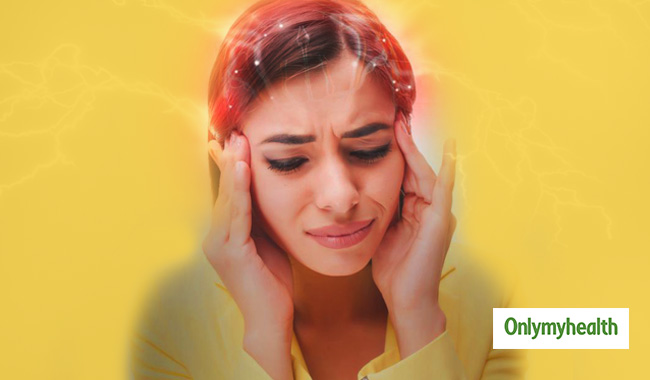
Migraine is a type of chronic headache that can cause considerable pain for hours or even days. A patient with severe symptoms may want to rest in a dark, quiet place. In some people migraine headache may be preceded or accompanied by sensory warning symptoms or signs called auras. Common auras include flashes of light, blind spots or tingling in your arm or leg. Although medications to cure migraine is not available, prescription drugs can reduce the frequency and severity of migraines.
Table of Content:-

Read: What makes the Head Hurt?
Causes
The exact cause of migraine is not known, but genetics and environmental factors seem to play a role. Migraines may be caused by alteration of neuro-chemicals in the trigeminal nerve, and imbalances in brain chemicals, specifically serotonin. Serotonin levels probably decrease during migraines that may trigger your trigeminal system to release a neuropeptide, which reaches your brain's outer covering (meninges) to cause headache.
Some common triggers of migraine include;
Natural or triggered hormonal changes especially seen in the case of women, where headaches are marked with a drop in hormone estrogen. Women may experience headaches prior to or during their menstrual cycle. Certain medications like oral contraceptive pills and hormone replacement therapy may either trigger or subside such headaches.
- Certain foods such as beer and red wine; aged cheeses; chocolate; aspartame; overuse of caffeine; monosodium glutamate
- Stress and anxiety
- Sensory stimuli such as bright lights, sun glare, loud sounds, perfume, unpleasant odors (such as paint thinner and smoke)
- Disturbance of wake-sleep pattern such as missing sleep, sleeping too much
- Physical factors like physical exertion
- Changes in the environment condition (too hot or cold environment)
- Certain medications can aggravate migraines
Symptoms
Migraines can begin in childhood, adolescence or early adulthood. A person with migraine may have some or all of these signs and symptoms:
- Moderate to severe pain, which usually involves one side of the head or may affect both sides
- Pulsating or throbbing pain
- Worsening of pain with physical activity
- Pain can interfere with the daily activities
- Nausea with or without vomiting
- Sensitivity to light and sound
An untreated migraine headache can persist for 4 to 72 hours. The frequency of migraine headaches varies from person to person; some may have migraines several times a month, whereas others can have less often.

In most people migraines are not associated with auras (originally called common migraines), where as some people may have migraines with auras (classic migraines).The common auras include changes to your vision, such as seeing flashes of light, and feeling pins and needles in an arm or leg.
Read: Ayurvedic Remedies for Migrane
Tests and Diagnosis
Your doctor will take a comprehensive history to make a diagnosis of migraine headache. Your doctor will ask questions regarding how the headache starts, learn about the quality, quantity, and duration of the pain, and any associated symptoms like nausea, vomiting, or light sensitivity. If your symptoms are typical, your doctor will likely diagnose the condition on the basis of your medical history and a physical exam. Physical and neurological examination is normal in migraine. In case your headaches are unusual, severe or sudden, or you have abnormality on physical examination your doctor may recommend the following tests to rule out other possible causes for your pain like tumors, strokes, infection, aneurysms, neurological diseases and other brain abnormalities.
Read more articles on Migraine.
For more related articles, download OnlymyHealth App.
Read Next
Foods that Trigger Migraine Headache
How we keep this article up to date:
We work with experts and keep a close eye on the latest in health and wellness. Whenever there is a new research or helpful information, we update our articles with accurate and useful advice.
Current Version
